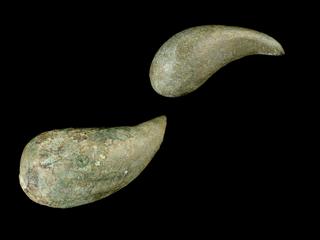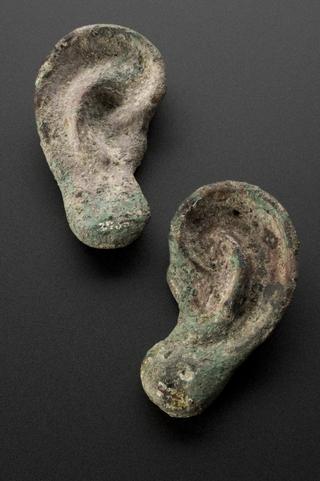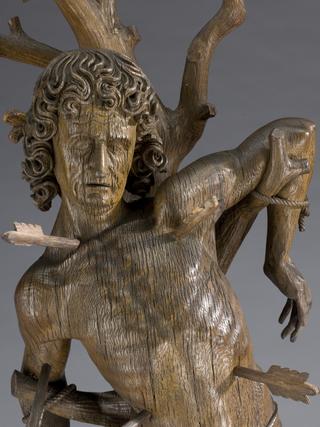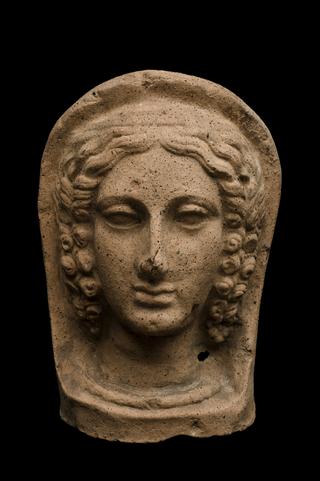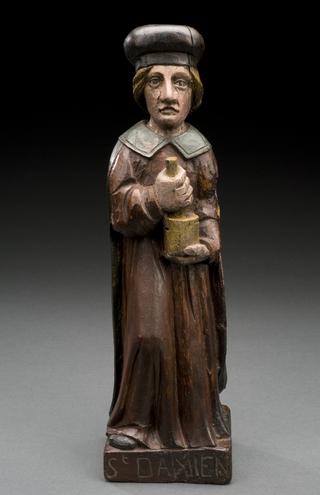




Elaborately carved and inlaid wooden reliquary chest containing relics of several saints, Spanish (?) 18th century
Relics are objects associated with Christian saints – either pieces of bones or personal items. To pray before a relic was to ask a saint to send one’s petitions directly to God. There was a vast trade in relics with a large number of counterfeit items being sold.
This chest is said to contain the relics of several saints, including Saints Cosmas and Damian, twin brothers who practised medicine. The chest also contains relics of St Crispin and St Crispinian. The relics are wrapped in fabric and can be identified by a handwritten label. The chest is made from ebony ornately decorated with coloured glass and mother of pearl. Only a wealthy owner could have afforded to buy it, although it may have belonged to a monastery or convent.
Details
- Category:
- Classical & Medieval Medicine
- Collection:
- Sir Henry Wellcome's Museum Collection
- Object Number:
- A634987
- Materials:
- chest, ebony, inlay, glass, coloured and inlay, mother-of-pearl
- type:
- reliquary
- credit:
- Malcolm
